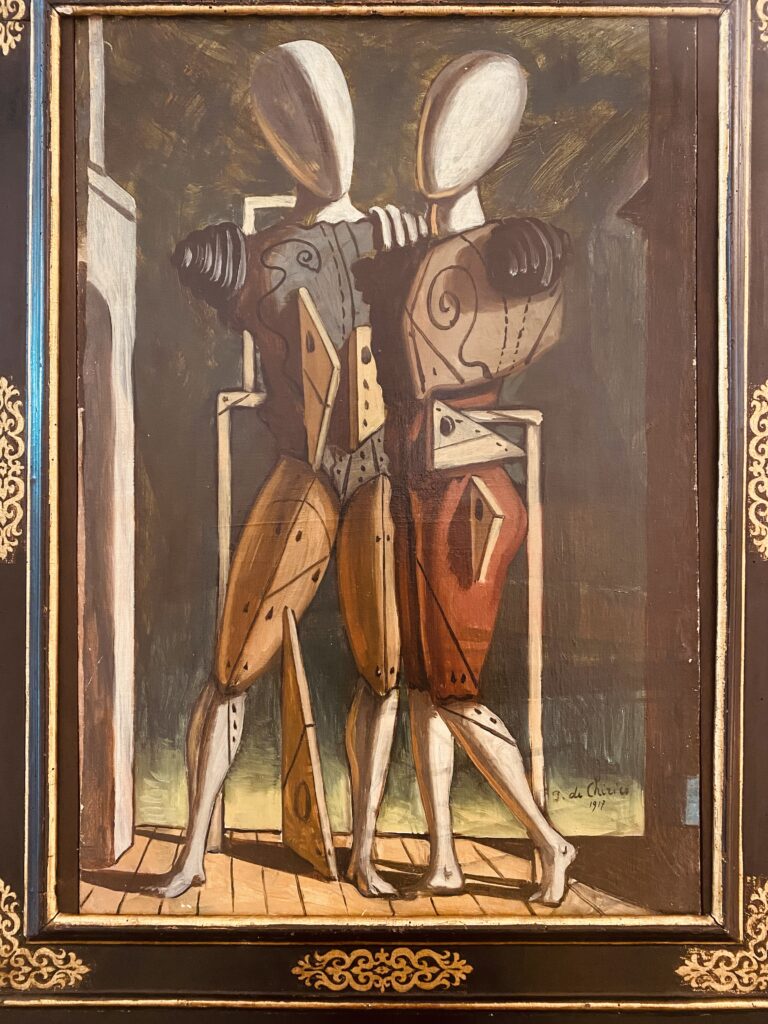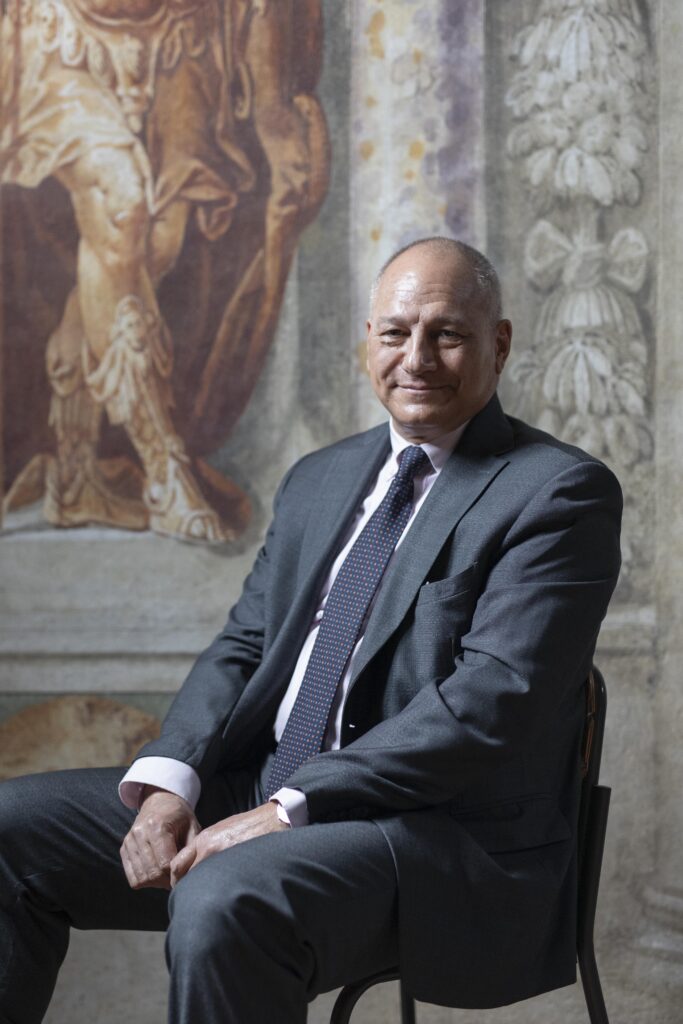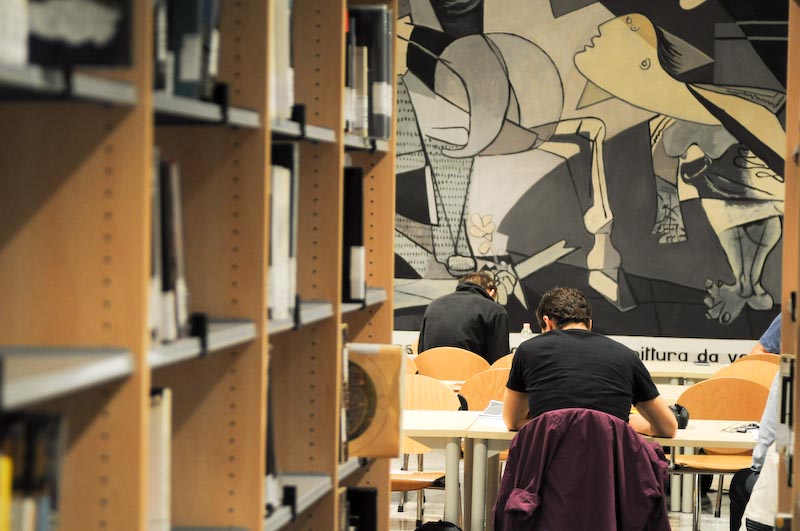If you go through the automatic gates of the library in the Leonardo Campus and continue straight on, you might catch a glance of something in the corner of your eye just before the glass doors that separate the entrance hall from students studying intensely: there’s a doorway.
Casting your gaze the doorway, you can see a painting. It hangs on the other side of the wall, in a small, dedicated room. “Ettore e Andromaca” (“Hector and Andromache”), an oil painting on canvas measuring 82cm by 56cm, is stored there in a glass case. The canvas is signed in the bottom right-hand corner: Giorgio De Chirico, 1917. “Every so often students ask whether it’s real,”, we are told at the library reception. And the response is yes, it's an original De Chirico.

Federico Bucci, the Rector's Delegate for Cultural Policies and Vice Rector of the Mantua Campus of the Politecnico di Milano, explains its provenance:
“The work comes from a donor who asked to remain anonymous. He wanted to give it up on one condition: that the painting was to be enjoyed by the students specifically. So, we decided to position it in one of the passing places of the Campus, and in a passing place of thought. We’ve put it in particular place: there's the intriguing doorway, and once you enter the room there’s a bench on which to sit and fully appreciate the work. We wanted to create the same sense of tranquillity when you are looking at the painting, the same feeling as when you are sat in the library in front of a book, delving into the subject.”
The painting depicts the verses of theIliad in which Andromache begs Hector not to leave the walls of Troy in order to face Achilles in battle. In these verses Homer writes: Andromache...clasped his hand and spoke to him, saying: “Ah, my husband, this prowess of thine will be thy doom, neither hast thou any pity for thine infant child nor for hapless me...nevermore shall any comfort be mine.

A few steps away in the Sala Guernica there is a reproduction of Picasso’s Guernica, which was created in 1973 by “Movimento Studentesco” (“Student Movement”). Bucci recalls that period:
“They were years in which the students’ ideological commitment led them to replicate an anti-war piece, which is still relevant today. The reproduction of that Picasso work has a specific meaning: here you study, you work on a particular topic but then you lift your gaze and reflect on the future of society, on the goal of peace. Positioning this De Chirico here today has the same meaning.”

He then delved into a description of the scene: “it's a painting in an architectural setting, beginning with the central perspective of the floor, which has the same colouring as the two mannequins. The two figures are tailoring tools which cannot embrace one another, telling us that modern man needs heart, spirit and humanity. And it reminds us that while I am here and I am studying mathematical analysis or building science, while I am designing the future - because that’s what we do at the Poli, we lay the groundwork for the future - there, I am called back to humanity. It’s a way of reflecting that, of course you may become an architect, an engineer or designer, or maybe you aspire to become a Nobel Laureate in chemistry, but the important thing is to stay true to ourselvesTherefore, putting an artist here means sending a message first and foremost to say that yes, we have our profession, but we will never forget that we are people".
Andrea, a student of Electronic Engineering, stops in front of the painting and remarks: “Being in a place of knowledge, surrounded by icons, motivates me to study. It feels like being in a museum which is in some way only open for you.”. Gianluca, a student of Mechanical Engineering, adds: “Having a work of art like this gives personality to the library. The figures look like they could be studies of aerodynamics applied to the human form.”. Beatrice, a student of Management, Economics and Industrial Engineering who chose History of Art as an optional course, said: “In an environment of technical minds, I see art as a form of freedom, an extra resource, a reminder that we can use our imagination. The fact that the painting almost needs to be discovered behind this doorway gives a sense of looking into things and gives the impression that the Poli is a place which is also connected to art”.

The Leonardo Campus library catalogue includes certain titles devoted specifically to De Chirico, such as the book by art historian Vincenzo Trione, “Giorgio De Chirico. The city of silence: architecture, memory, prophecy” (Skira). One student left a mark by underlining certain passages in pencil: “that which interests him is not solid reality, but the theatre of the space. He covers recovery and bleakness, playing with literal homages and disguises. He always bases his work on real figures which he then modifies, until they become almost unrecognisable, echoes of a dawning world.”
On the topic of students, Federico Bucci observes that “in the 1920s, a student at the Politecnico that knew about metaphysical painting probably stood in front of this painting himself. It is important that there is a recovery and an exchange between the young generations of then and now. In the library, we have also put up drawings from the archives which were created by students between the 19th and 20th centuries, precisely because we envision an art collection that is capable of interacting with our memories.”".
Meanwhile, a girl who has just passed through the library's entrance gates slows down. For a moment, before entering the study room, she looks at the doorway, intrigued.